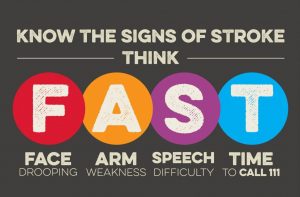
Strokes affect people in unique ways and Occupational Therapy works to offer rehabilitation and support services that are tailored to the individual.
What is a stroke?
Strokes can be caused by a blockage to, or a bleed in the brain leading to a reduction in blood supply to a specific area. Without a fresh supply of oxygenated blood, the tissue becomes damaged or dies. The physiological and cognitive effects of a stroke vary depending on the location within the brain. For some, the effects will be minor and a recovery almost complete, whereas for others the effects can be life-changing and mean that they are likely to always require the assistance of others.
What are the common difficulties associated with a stroke?
Strokes effect people in different ways depending on their location in the brain and severity. Common difficulties following a stroke include:
How can occupational therapy help following a stroke?
Occupational therapists often work with clients and their families following a stroke to help them on their rehabilitation journey or to adjust to a new version of normal. The role of a occupational therapist can vary depending on the needs of the client and can cover both physical and cognitive treatment. Below are some of the ways that an occupational therapist can help following a stroke:
Sometimes following a stroke a client's level of physical ability is reduced. This can mean that they home environment can pose significant barriers to their independence and quality of life. An occupational therapist can work with clients to remove these barriers with solutions for the bathroom and toilet, accessing both floors of the property and getting in and out of the property if a wheelchair is being used.
Carefully selected specialist equipment can provide significant assistance to clients and their carers following a stroke. Whether it be wheelchairs, armchairs, beds or hoists, the right equipment can reduce risk and maximise a client's independence.
Occupational therapists work with clients to set and achieve rehabilitation goals. For some, this may be to get themselves washed and dressed independently and for others, to return to shopping and preparing meals or to paid employment.
Occupational therapy is an essential step along the road to recovery after stroke.
